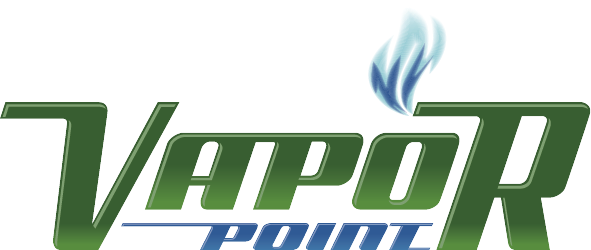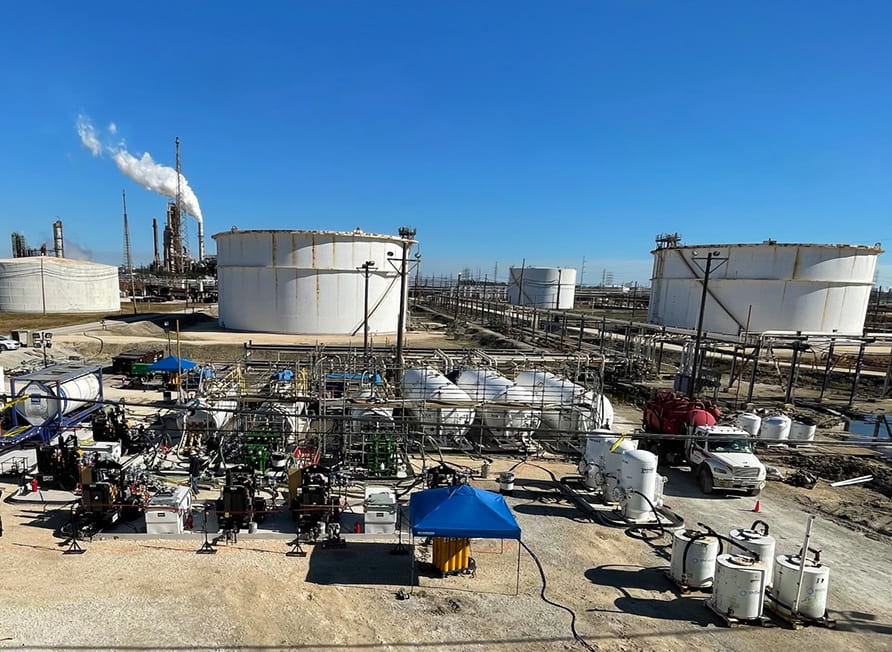A Gulf Coast refinery produces straight run naphtha from their crude unit. This naphtha, referred to as atmospheric crude naphtha, ACN, contains varying amounts of H₂S, dependent on the refinery crude slate and cut points of the streams. During normal operation, this material is sent to a hydrotreater to remove the H₂S. During turnarounds on this naphtha hydrotreater, this high H₂S naphtha stream must be run through other units for the removal of the H₂S or stored until it can be rerun. This limits overall refinery throughput or requires tankage to hold the material. If the naphtha stream had an H₂S content below acceptable levels to be loaded in a barge, the material could be sold. For safety reasons, this limit is less than 15 ppm H₂S in the headspace.
Challenges
- Presence of mercaptans in the stream increasing chemical spend
- Varying concentrations of contaminants
- Logistical requirements for full-scale temporary system
- Limited available footprint
- Solids precipitation concerns
The Vapor Point Solution
To determine the viability of a chemical treatment system for the removal of H₂S, a test was performed utilizing a scaled down system. The system consisted of a chemical treatment step, a water wash for the removal of entrained chemical, and a filter to remove free liquid prior to return to the tank. The test indicated success treating to a low enough H₂S level to be loaded into barges. Large amounts of water in the inlet feed were seen during the test. Following the completion of the test, design began on a full- scale system, based on flow rate of 15 kbpd and an H₂S level of 60 ppm in the liquid.
The full-scale system consisted of temporary equipment interconnected with stainless steel hoses. The inlet of the full-scale system included filters to remove water coming into the system. Two chemical treatment systems were placed in parallel to allow for appropriate separation time and a single water wash vessel was utilized following the chemical treatment. The vessels operated utilizing a circulation of the chemical or water to contact the naphtha stream across Vapor Point High Shear Equipment. Batched bleed/makeups were performed on each shift on the chemical treatment vessels and the water wash vessel to maintain good chemical hygiene. An outlet coalescer was utilized to remove free water.

Vapor Point’s Results
During startup, the rate was controlled down to approximately 5,000 bbl/day initially to verify the system was operating properly. The system was then operated at 11,000 bbl/day to minimize chemical spend. After a stabilization of H₂S levels coming from units generating the ACN, the system was raised to its maximum rate of 13,200 bbl/day (the system was unable to achieve the 15,000 bbl/day target due to pressure limitations feeding the system). The system treated naphtha for 29 days and treated a total of 290,360 bbls of sour naphtha. H₂S levels in the naphtha reached as high as 222 ppm, with mercaptan levels as high as 444 ppm. The outlet H₂S level in the liquid was consistently less than 1. Headspace H₂S readings taken on the outlet of the system indicated H₂S levels well below the 15 ppm limit. The sale of this naphtha via barge allowed for the client to generate revenue from the stream without minimizing facility throughput or consuming valuable storage space in the facility.


